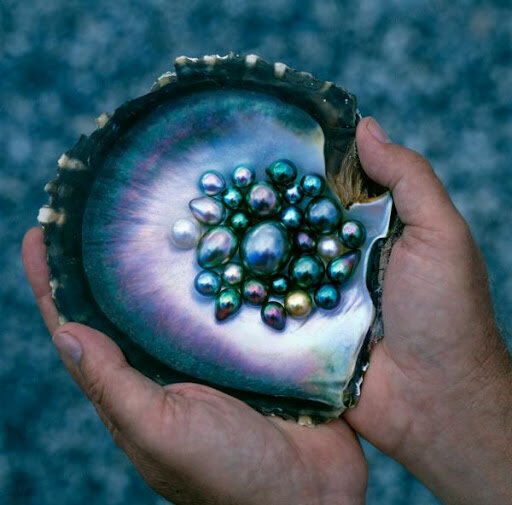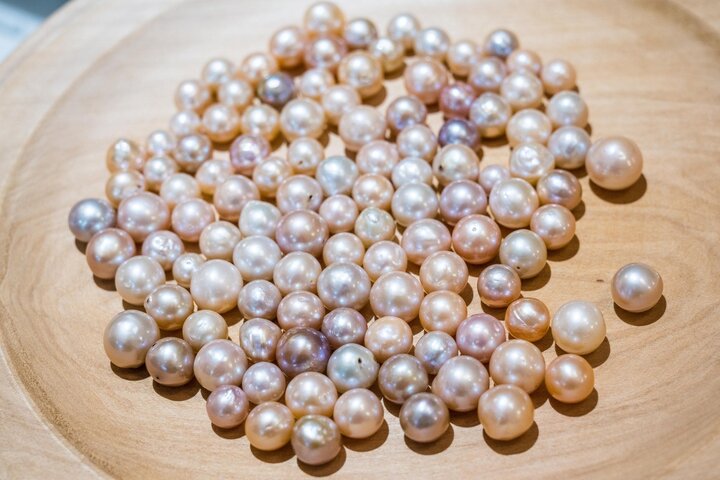The Long-standing History of Pearl Farming in Phu Quoc
Before the 20th century, pearl diving was the most common method of harvesting pearls. Divers would collect oysters and mussels from the sea or riverbeds and check each one by hand for pearls. However, not all naturally occurring oysters produce pearls. On average, only 3 or 4 oysters out of a 3-ton haul would contain a perfect pearl.
In Phu Quoc, pearl farming has been developing for nearly two decades using techniques from Australia and Japan. This craft has gradually evolved into a unique tourism product, catering to visitors looking to purchase jewelry or souvenirs during their time on the island.

Pearl farming has a long tradition in Phu Quoc.
Overview of the Pearl Cultivation Process in Phu Quoc
Phu Quoc's favorable natural conditions, especially its clear and clean seawater, make it an ideal location for pearl farming. Most pearl farms are located in calm sea areas. Farming oysters at sea is not a simple task. Before starting, farmers must invest tens of millions of VND in building floating rafts and mesh cages. The mother oysters are carefully selected and placed in prepared cages in the ocean.

Pearls are often referred to as treasures of the sea.
Once the oysters reach a suitable size, maturity, and reproductive condition, a nucleus is implanted to initiate pearl formation. Depending on the size of the intended pearl, the cultivation process can last from one to four years after implantation. The harvest season typically falls between August and October each year. After harvesting, pearls are thoroughly washed and sorted. Those that are misshapen or have surface blemishes are filtered out for additional processing.
Pearl Quality Standards
A high-quality pearl must meet seven criteria:
Size
Shape
Color
Luster
Surface smoothness
Nacre quality
Matching (if used in sets)
Phu Quoc pearls are considered highly valuable because they meet all seven of these standards. Depending on color, shape, and overall quality, the price of each pearl can range from several tens to thousands of U.S. dollars.
Pearls here come in a variety of colors, often white, cream, or pinkish, and can also exhibit yellow, green, brown, purple, or black hues. The pearl products in Phu Quoc are known for their vibrant color, high luster, and perfect roundness—particularly the rare black and deep blue pearls, which are considered specialties of this island.

Evaluating pearls involves numerous criteria.
The luster of Phu Quoc pearls depends on how light reflects and refracts through the layers of translucent nacre. The more and thicker the nacre layers, the more beautiful the pearl appears. The iridescent rainbow effect seen in some pearls is caused by overlapping nacre layers that scatter light as it hits the surface.
Pearl farming carries an air of mystery—it’s the art of crystallizing the sea. The calm, patient transformation beneath the ocean produces radiant gems in hues of pink, white, gold, black, and blue. These natural wonders are then turned into exquisite pieces of fine jewelry such as necklaces, bracelets, rings, and earrings.



